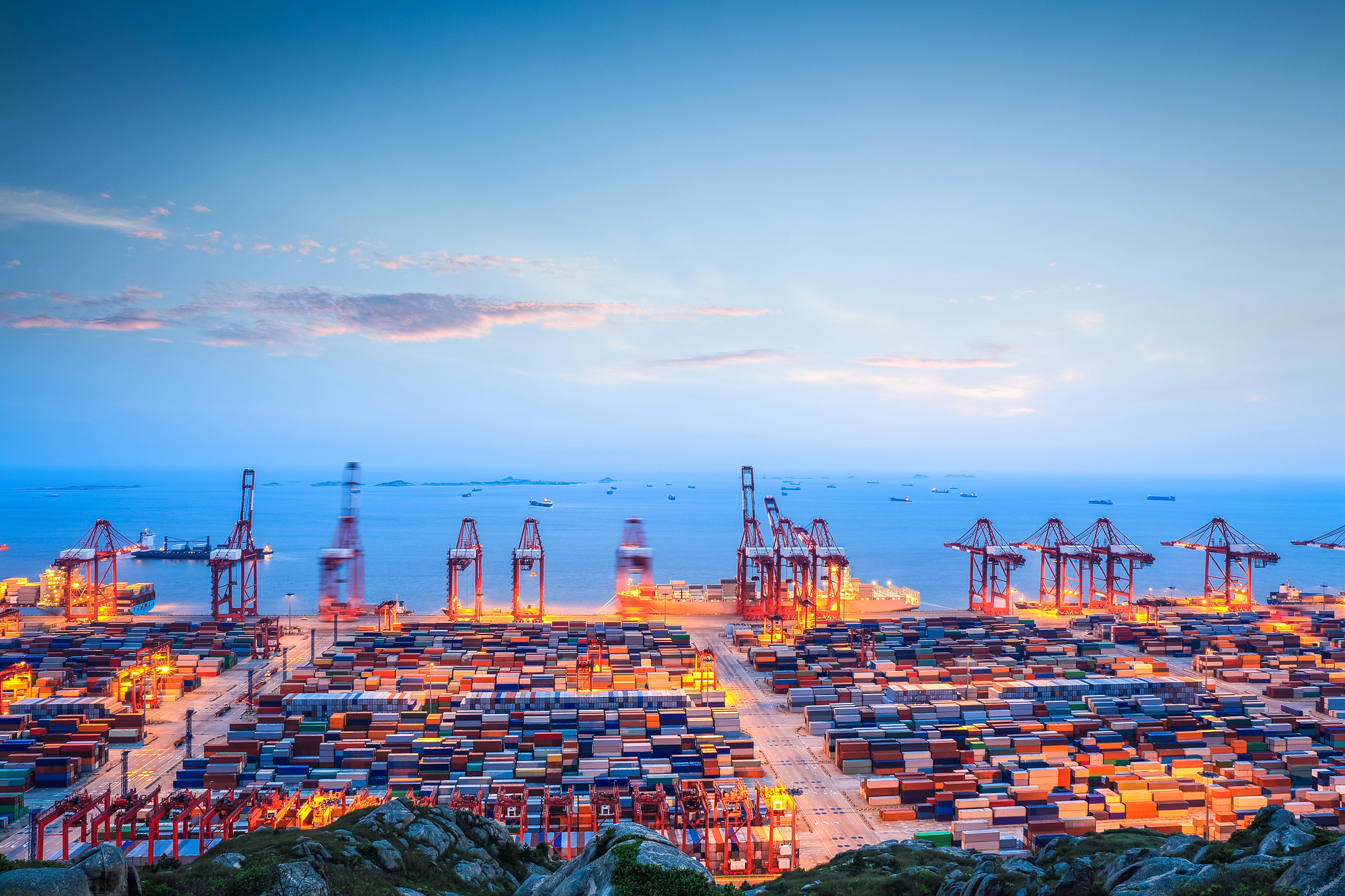For those interested in exploring shipping jobs, it is worth knowing where the key locations are globally for the shipping industry.
The industry itself is central to supporting international trade by carrying over 80% of total trade across the world. And the shipping hubs that support this network of activity are vital to the success of the sector. We’ve detailed the main shipping hubs below:
Shanghai, China
This is the busiest port in the world by container volume, handling over 20 million TEUs (twenty-foot equivalent units) per year. It sits strategically at the mouth of the Yangtze River and embraces advanced technology and extensive infrastructure to give it its place at the top of the list. Specifically, it offers several deep-water port areas, one of which is connected to the mainland by a 32.5km bridge that brings logistical efficiency benefitting the world’s largest container ships.
Singapore
Known for its efficiency and strategic location at an intersection of major East-West shipping routes, Singapore handles almost 40 million TEUs per year. The port boasts first-class facilities such as automated cranes and digital IT capabilities, and it offers a pro-business political environment.
Shenzhen, China
Shenzhen is a huge port that handles almost 30 million TEUs per year. Its close distance to Hong Kong and its situation in the Pearl River Delta economic zone give it strategic significance in shipping. The port has benefitted from substantial manufacturing export growth from the region and has gained from technology and infrastructure investment.
Ningbo-Zhoushan, China
A key location in shipping, Ningbo-Zhoushan handles almost 30 million TEUs per year. It takes advantage of its deep-water berths capable of supporting the largest vessels. It also benefits from excellent logistical networks with connecting road and rail links available.
Busan, South Korea
Busan is South Korea’s busiest and the 6th largest container port in the world. The port handles over 20 million TEUs and its location is ideal for supporting the North-East Asia shipping channels. Busan boasts modern facilities and efficient cargo handling systems.
Hong Kong
Hong Kong is steeped in maritime history and has developed significance thanks to its strategic location, free trade policies and outstanding connectivity. Handling almost 20 million TEUs, Hong Kong is a major gateway for goods entering and leaving China. The port offers first-class logistics and infrastructure, and benefits from a highly skilled workforce. Finally, its importance as a top global financial centre propels its shipping significance.
Rotterdam, Netherlands
Rotterdam is the largest port in Europe and one of the busiest in the world, supporting almost 15 million TEUs per year. Its strategic situation at the mouth of the Rhine-Meuse-Scheldt delta brings prime access to continental Europe. Rotterdam is committed to innovation and sustainability, and it offers outstanding facilities and logistics networks.
Dubai, United Arab Emirates
The Port of Jebel Ali in Dubai is the largest in the Middle East, supporting almost 15 million TEUs per year. In a key strategic location, Dubai connects the East and West. Its highlights include excellent logistics infrastructure, first-class facilities, deep-water berths and technologically advanced terminal operations.
Qingdao, China
Qingdao in Northern China is a major shipping hub, handling approximately 20 million TEUs per year. It boasts deep-water berths and world-class facilities that enable it to accommodate large container ships. Qingdao is strategically located on the Yellow Sea and brings close connectivity to China’s mainland.
Shipping hubs are at the core of the global supply chain that supports international trade and economic growth. It is no coincidence that the hubs all sit in strategic locations, where goods can be consolidated, transferred and dispatched to maximise efficiency and reduce transit times and costs.
DISCLAIMER – “Views Expressed Disclaimer: Views and opinions expressed are those of the authors and do not reflect the official position of any other author, agency, organization, employer or company, including NEO CYMED PUBLISHING LIMITED, which is the publishing company performing under the name Cyprus-Mail…more







Click here to change your cookie preferences